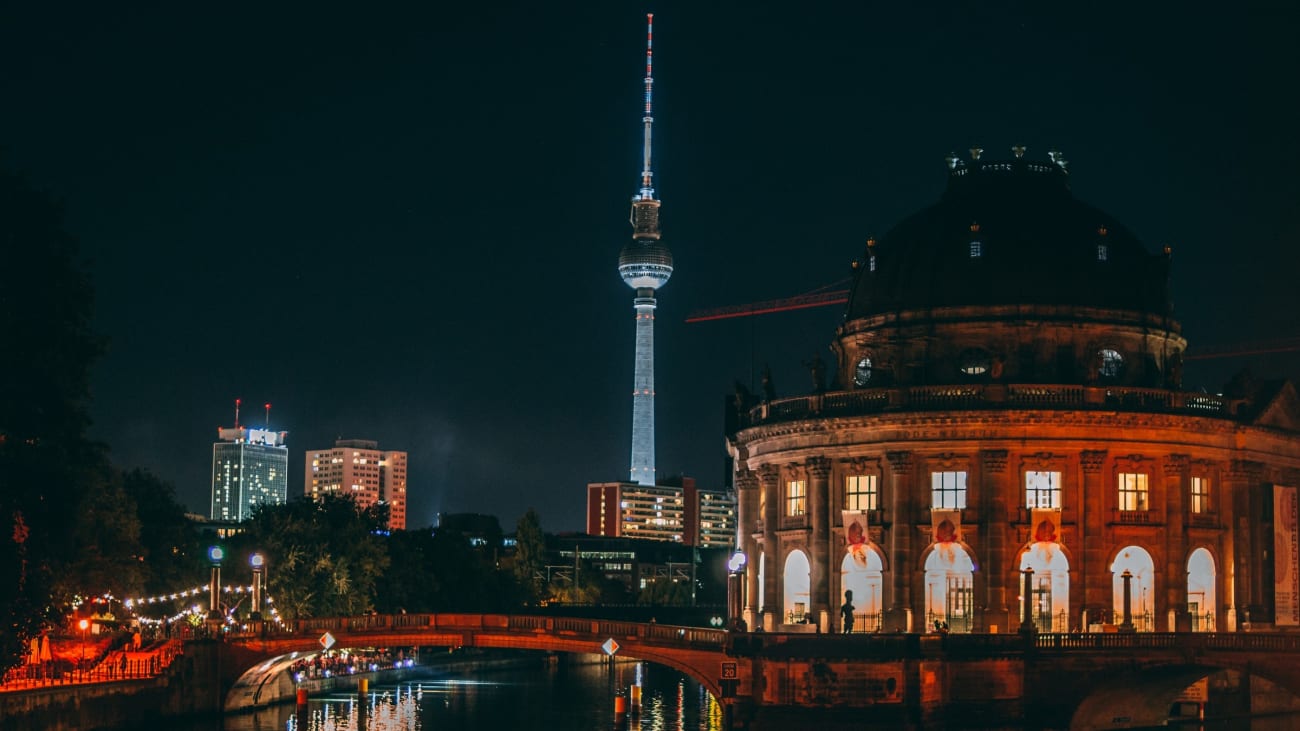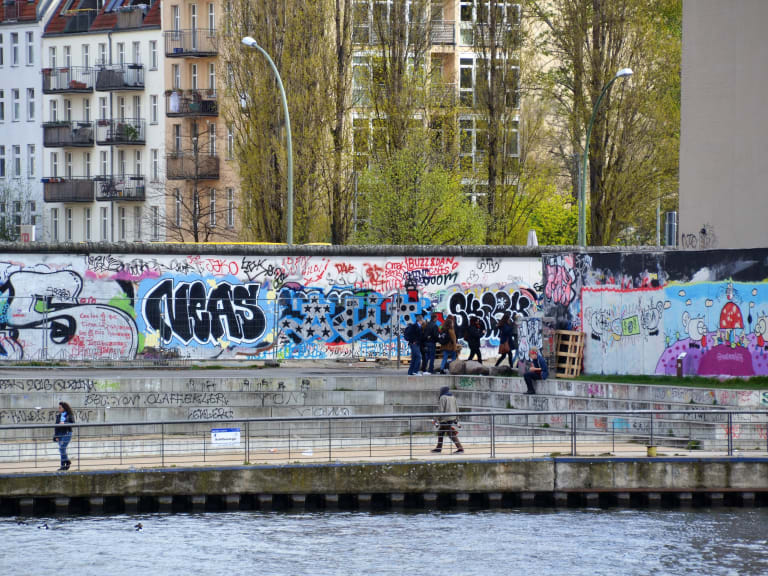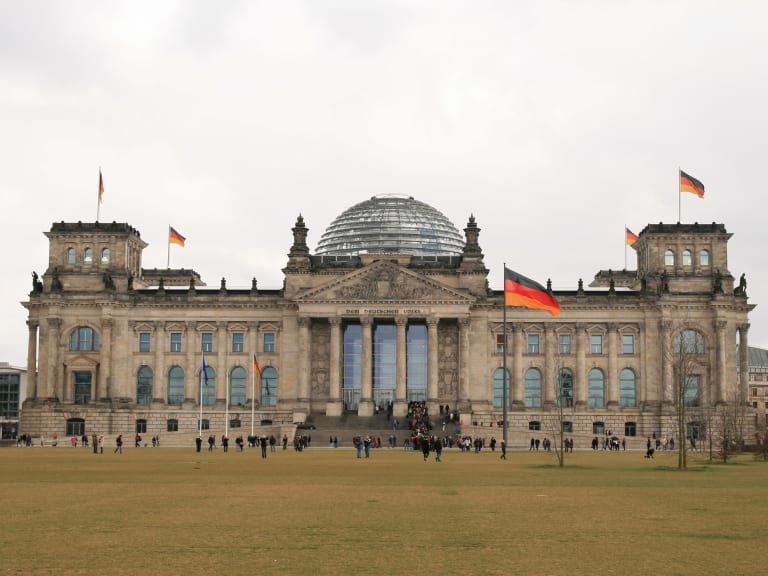Berlin in 4 Days: everything you need to know
Get the best out of Berlin with a complete four-day tour, from classic to alternative.

Berlin | ©Denislav Jeliazkov
Berlin is famous for its Cold War monuments and vibrant music and arts scene. However, the German capital hides places where time seems to have stood still and natural sites of great beauty. Our route tries to take the best of each facet to give you a rounded itinerary to get you there without rushing. Read on to find out what to see and do in the German capital.
Day one: the essentials
Berlin has long been synonymous with the Berlin Wall. Its fall and the subsequent reunification of the country changed the course of the city, which regained its capital city status and enthusiasm. Today's tour should begin at the East Side Gallery, the last surviving section of the wall.
East Side Gallery and Alexanderplatz

The tour starts at a place linked to Berlin's recent history: the Berlin Wall. The largest section still standing is located in the East Side Gallery and is decorated with countless murals. It's a must-see on any trip to Berlin and well worth a visit for the street art. The graffiti date from 1989 but have been restored to mitigate the effects of the weather.
From this area it won't be difficult to reach the central Alexanderplatz, the vibrant heart of Berlin. You can opt for the bus (line 300), the train (line S5) or a twenty-minute walk.
In the latter case, just follow the silhouette of the TV Tower, which is just a few metres from the square. During the Cold War, it was the epicentre of the eastern part of the city and the Soviets took the opportunity to transform it into a showcase of communism. The World Clock, the Peoples' Friendship Fountain (Brunnen der Völkerfreundschaft) or the large mosaic in the Professor's House bear witness to this.
Reach the Museum Island

Museum Island is one of the city's must-see sights. This islet in the middle of the river Spree is home to five cultural sites, the most famous of which is undoubtedly the Pergamon Museum, the largest collection dedicated to the ancient world (although the museum is currently closed for renovation and will have to wait several years for its reopening). The treasures inside were found by German archaeologists in the late 19th century. Inside you will see several masterpieces:
- Pergamon Altar, the reconstruction of the original altar hosted in the city of the same name. Its bas-reliefs depict the struggle between Zeus and the giants. During the Second World War it was seized as booty by the Soviets but returned to Germany a few years later.
- Ishtar Gate. It adorned the temple of Marduk in the legendary city of Babylon. It is dedicated to the goddess of love and war and is remarkable for its beautiful tiles.
- TheAleppo Hall, the reception room of the Christian merchant Isa ibn Butrus. It is splendidly preserved and its colours are still very vivid.
- Gate of the Roman market in Miletus. As far as we know, it dates from the 2nd century AD and was probably erected during the reign of the Emperor Hadrian. It is one of the best-preserved
Visit the German Parliament

Take the underground and get off at the Bundestag stop, a few metres further on you will find the Reichstag building. Like other buildings in the city, the Reichstag was badly damaged during the Second World War. The original dome has been replaced by a glass roof and it is possible to climb to the top to admire the panorama. You can do this from 8:00 to 24:00.
Other alternatives are a guided tour or listening to a session of parliament. In both cases you'll have to register on the official website. Don't worry, it has a page in English. The Bundestag has had a turbulent history and it's worth taking the time to discover the most important events, from the Weimar Republic to the period of the reunification of the country.
Stand and watch the sunset at the Brandenburg Gate

The imposing and famous monumental gate was built at the behest of Frederick the Great, King of Prussia and a man of great talents. It is a copy of the Acropolis in Athens and measures 26 metres high and 11 metres long. If I didn't miscalculate, you will arrive at sunset, one of the best times to enjoy its charms. Before nightfall, the last rays of the sun shine on the sandstone that makes up the monument.
The Brandenburg Gate is one of the top 10 sights to see in Berlin at night. It is the icon of the city and the spotlights make it glow in the dark. Events, concerts or other events are often organised at its foot. If you visit the German capital in November you might come across a commemoration of the fall of the Wall.
All Berlin sightseeing bus tours stop at this monument. That's why I recommend you get a 24- or 48-hour pass to hop on one of them and discover this and other must-see places in the city in comfort.
Day 2: Kreuzberg and signature cocktails
Kreuzberg has the reputation of being the coolest neighbourhood in Berlin. The graffiti and cosmopolitan atmosphere make it a must-see stop. Today we'll explore this area of the capital.
Stroll through the Turkish quarter

During the Cold War, Kreuzberg was the poorest neighbourhood in the western part of the city. Gradually, low housing costs attracted a mix of hippies, squatters, artists and Turkish immigrants. The first arrived in the 1960s and many of them decided to stay in the capital. Today, Kreuzberg is a multicultural district and is well worth a morning's exploration. Below you will find the main attractions of the district:
- Oranienstraße and Bergmannstraße, two shopping streets. Among the most popular shops are Hammett Krimibuchhandlung (a bookshop specialising in crime novels, Friesenstraße 27), Coy Art To Wear (hat paradise, Sophienstraße 6), Picknweight (a classic vintage shop, Bergmannstraße 102) and Prinzessinnengärten, an ecological and social garden that sells its harvests (Hermannstraße 99-105).
- Engelbecken, a park where a canal once stood. In the 20th century, the King of Prussia had a canal built and named it Louisenstadt in honour of Queen Ludwig of Mecklenburg-Strelitz. Unfortunately, this waterway was short-lived and was drained at the beginning of the 21st century. Today, a small lake is a reminder of the district's "watery" past.
- Berlinische Galerie, the museum of Art Nouveau art, photography and architecture. The ticket costs about €10. Open Wednesday to Monday, 10:00 to 18:00 (Alte Jakobstraße 124/128) - Beach bars, the establishments overlooking the river Spree. The best are Club der Visionӓre ( very busy on Sunday afternoons, Am Flutgraben) and Badeschiff, a floating pool with deckchairs and sun loungers (Eichenstraße 4).
- Topography of Terror, the building that housed the Gestapo. Today it is a museum dedicated to the dark years of the Nazi era. Open daily from 10:00 to 20:00 (Niederkirchnerstraße 8).
- Oberbaumbrücke, Berlin's most beautiful bridge. During the Cold War it was one of the few borders between east and west.
You can get to know this beautiful district and many of its charms by taking one of the Berlin cruises. You can also take advantage of the boat trips with dinner on board for a complete experience on the river Spree.
Order a cocktail in Limonadier

In Kreuzberg there is no shortage of options when it comes to finding a bar and yet my choice is easy: Limonadier. The gin, some of the liqueurs and lemonade are home-produced and leave their mark on every creation. You'll see a few original drinks and the staff is always available to guide you in your decision.
It is located at Nostitzstraße 12 and is open from 19:00 to 2:00 (Monday to Thursday) and from 19:00 to 3:00 (Friday and Saturday). It also offers a happy hour from 19:00 to 20:00. I assure you it's worth it.
Third day: the surroundings
If the first days have been spent visiting Berlin, on the third day we will leave the city to reach Wansee, a town in the Berlin district of Steglitz-Zehlendorf. It is only a short distance from Potsdam.
Explore the Großer Wannsee

If you visit the German capital in summer you can escape the heat at the Großer Wannsee, an inlet of the Havel River. It is about 20 kilometres southwest of Berlin and has a very large beach (strandbad) with white sand imported from the Baltic coast. You can rent sun loungers and swim in Europe's largest open-air bathing area.
There are also water slides, changing rooms, children's playgrounds, bars and restaurants. The beach (strandbad) opens at the end of March and closes in mid-September while the daily opening hours are from 9:00 to 20:00 (Friday and Saturday until 21:00). Admission is around €5. It' s easy to get here from Berlin Central Station by taking the S7 or S1 train and getting off at Wannsee. The journey takes about 45 minutes.
Another recommended option is to rent a bike and cycle the Wannsee-Babelsberg route. Note that bicycles are generally allowed on trains, while on metros and trams you can only get on if the doors are signposted and if there is enough space. Therefore, you can rent your two-wheelers in the centre of Berlin. The route is 14 kilometres long and takes in the highlights of the area:
- Liebermann-Villa, the former summer house of the painter Max Liebermann. It is now an art museum dedicated to its former owner and houses some 150 engravings, oil paintings, pastels and drawings. If you feel like it, you can book a guided tour that will reveal the history behind the works and the charms of the garden surrounding the residence.
- House of the Wannsee Conference, the residence where the Final Solution of the Jews was planned. Today it houses a permanent exhibition ("The Wannsee Conference and the Extermination of the European Jews") with photographs, newspaper clippings, copies of documents, propaganda and other documents accompanied by descriptive texts.
- Pfaueninsel, a small island hiding a romantic palace. At the end of the 18th century, Frederick William II of Prussia built this place for himself and his favourite mistress, Wilhelmine Enke. To get here you will have to take a ferry that does not accept bicycles. However, you can leave your bike at the stands near the pier.
- Glienicker Brücke, the bridge across the Havel River. It's a crucial link in the road between Potsdam and Berlin and during the Cold War it marked the border between West and East - Babelsberg Palace, the summer residence of Emperor Wilhelm I. The architect Karl Friedrich Schinkel was inspired by English Tudor mansions and the result is a fascinating neo-Gothic building. Unfortunately, it is only open during exhibitions and special events.
Taste the local delicacies

After such an intense day, you should recharge your batteries with a classic of German cuisine: Königsberger Klopse. If you're not familiar with the local recipes, you'll be pleased to know that it's a delicious meatballs and anchovies accompanied by a caper cream. The recipe originates from Königsberg, today's Kaliningrad, and is very popular throughout the country. It is said that Kant himself couldn't say no to Königsberger Klopse.
If you want to try the best ones, I recommend Berlin Beef Balls, a newcomer to the city that has managed to carve out a niche for itself in the capital's gastronomic scene. In addition to traditional recipes, there are also modern and vegetarian versions. It is located in the covered market Markthalle Neun (Eisenbahnstraße 42/43).
Day 4: Tradition
Reach the historic district of Spandau

For the fourth and last day, you can take a stroll through Spandau, a very charming district. It is located on the banks of the Havel River and is best known for the Citadel, a 13th-century fortification that was later converted into a Renaissance building. To begin the route you can visit the permanent exhibition that illustrates the history of this place. It is housed in the former commandery.
The Spandau Citadel is an imposing red brick building. Its front is embellished by a large coat of arms with the royal crown, which was added during the reign of Frederick III. Another unique attraction is the Queen's Bastion. Hidden in its bowels is a cave inhabited by a colony of bats, and tours are organised to visit it. However, Spandau has much more to offer:
- Nikolaikirche, the church of St. Nicholas. It played an important role in the founding of the German capital: at the beginning of the 19th century the first Berlin assembly was held here. Open Thursday to Sunday, 10am-6pm (Reformationsplatz).
- Gotisches Haus, a late Gothic building dating back to the second half of the 15th century. Not much is known about it, but two things are certain: it is the oldest house in Berlin and it belonged to a merchant family. Today it hosts some temporary exhibitions (Breite Straße 32).
- Lindenufer, a wonderful park surrounded by water. Take some time to stroll along its paths. Two rivers, the Havel and the Spree, meet here. If you feel like it, you can walk to the batardeau, a 19th century structure used to regulate water levels.
Discover the noble face of Berlin

After a break for a bite to eat and recharge your batteries, head to Charlottenburg Palace (Schloss Charlottenburg), the royal residence of the House of Hohenzollern. Frederick I of Prussia had this summer residence built as a gift for his wife Sophia-Carlotta. It is an artistic gem with a rococo ballroom, a porcelain collection (Porzellankabinett) and dozens of period objects.
Charlottenburg Palace is open all year round from Tuesday to Sunday, although the opening hours change with the season. From April to October it is open from 10:00 to 17:30, while during the winter it closes one hour early. The standard fare is around €17 and includes the rental of an audio guide available in several languages. To travel lighter, you can leave your backpack or bag in the free cloakroom.
Before returning to the hotel, I recommend a stroll through the gardens. The green area was designed by the French landscape designer Siméon Godeau who brought the aesthetic criteria of the gardens of Versailles to Germany. Its most famous landmarks are the mausoleum dedicated to the king's wife, the Belvedere tea house and the Neuer Pavillon, a neoclassical building inspired by a Neapolitan villa.
Is Berlin worth visiting in 4 days?
In my opinion, a four-day trip is ideal. You'll have enough time to see the capital's main attractions without having too tight a schedule. If you have five or seven days, you should consider visiting a nearby town. By train you can easily reach Dresden, Lipsia, or Hamburg. The palaces and gardens of Potsdam and the Sachsenhausen concentration camp are even closer.
